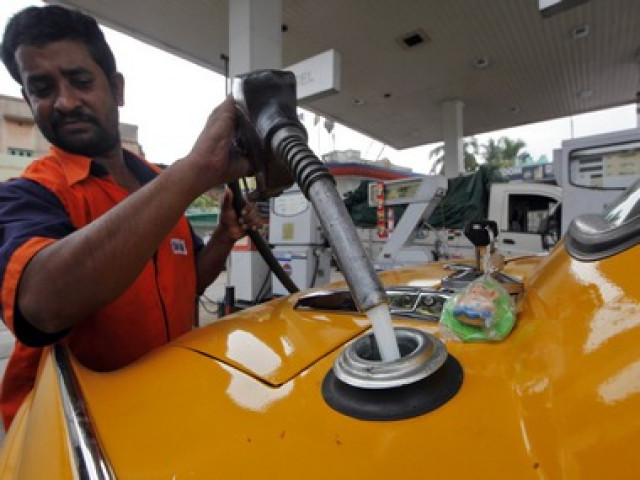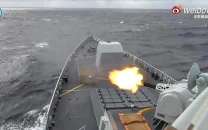India's diesel price dilemma - making the rich pay more
Expected reaction from India's poor as well as the rich after rise in diesel prices.

Faced with the risk that its sovereign credit rating could be cut to junk if it fails to rein in its fiscal deficit, the government is under pressure to cut runaway spending on fuel subsidies.
But, already on a backfoot over corruption, slowing economic growth and the caprices of coalition allies, Prime Minister Manmohan Singh has held back. Like LPG cooking gas and kerosene, diesel is seen as a poor man's fuel and so the government fears it would be forced by popular outrage into a u-turn if it cut subsidies, just as it was when petrol prices were raised in May.
It should fear less the wrath of the common man, however, than the hostility of big businesses and middle-class voters, who have become big users of diesel because it is so cheap and because regular power supplies are so unreliable.
When the north of the country was hit by massive power blackouts on two consecutive days earlier this month, the lights stayed on in offices, five-star hotels and swanky residential areas across New Delhi as thousands of diesel generators purred into action.
With petrol costing on average 42 percent more than diesel, there has been a jump in the share of cars powered by the subsidised fuel, while in the countryside only wealthy farmers who can afford a tractor or water pump benefit from the government’s largesse.
"The economy is being dieselised," said a senior Finance Ministry official, who asked not to be named due to the sensitive nature of the matter. "People are using it to run their private generators, telecom towers, cars. It is no longer the poor man's fuel."
Diesel subsidies cost New Delhi about 411 billion rupees ($7.39 billion) in 2011/12, or 0.7 pct of GDP, making the fuel much cheaper than petrol and costing state-run retailers about 11.25 rupees for every litre sold.
Government data shows diesel accounts for nearly 44 percent of fuel consumption in Asia's third-largest oil importer compared with 35 percent nine years ago.
While trucks and buses still consume the bulk of diesel, analysts estimate that consumption by cars, generating sets, industry and mobile telecom towers has gone up to about 40 percent from 30 percent in 2008/09, according to estimates by a government panel.
Diesel cars make up about 40 percent of new sales in India, from less than 20 percent a few years ago, data from an industry body shows. Almost all large, expensive SUVs and jeeps have diesel engines, as do many of the luxury saloons sold by companies like Audi or BMW.
Petrol fuels India's ubiquitous two-wheelers, which tend to be used by the less well-off. For the very poor, it's a bicycle at best.
"I'm not really buying the argument that removing the diesel subsidy would disproportionately affect the urban poor. Industrial users, farmers and the middle class would bear the brunt of a price hike," said Jesse Mercer at PFC Energy.
Drought prompts diesel price cut
Far from raising diesel prices, the government has just halved them to help farmers with irrigation in areas parched by a delay in the June to September monsoon, which could mean agriculture's share of overall demand will rise above an estimated 18 percent.
"The poor rainfall this monsoon season has added to the government’s woes, as farmers need to use diesel-driven electric pumps to pump water for crop irrigation," said Rajiv Biswas, Asia-Pacific chief economist at IHS Global Insight.
But again, it is likely to be the wealthy with large farms who benefit most - in states such as Punjab, in the country’s grainbowl, where rural incomes are nearly double the national average.
Over half of farms greater than five hectares own their own diesel or electric pump while only 8 percent of farms with less than a quarter hectare do, according to a 2010 report by the India Human Development Survey (IHDS), a joint US-India research body.
The IHDS report showed tractors are used on just 4 percent of India's mostly tiny farms, but in Punjab 43 percent of farms own their own tractor.
While a diesel price hike would certainly raise road freight rates, with heavy goods vehicles accounting for upwards of a quarter of demand, the feed-through to inflation would be limited, Finance Ministry officials argue. The shift to rail transport from polluting trucks could even be a benefit.
Analysts estimate a 5 rupee per litre increase - just under half current losses suffered by state-run retailers - would add 0.5-0.8 percentage points to headline wholesale price inflation, which is currently a little below 7 percent. ($1 = 55.6500 Indian rupees)












1726134115-0/BeFunk_-(41)1726134115-0-208x130.webp)






COMMENTS
Comments are moderated and generally will be posted if they are on-topic and not abusive.
For more information, please see our Comments FAQ